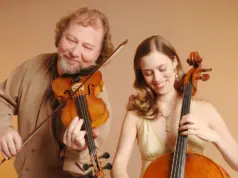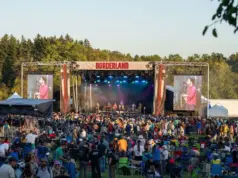
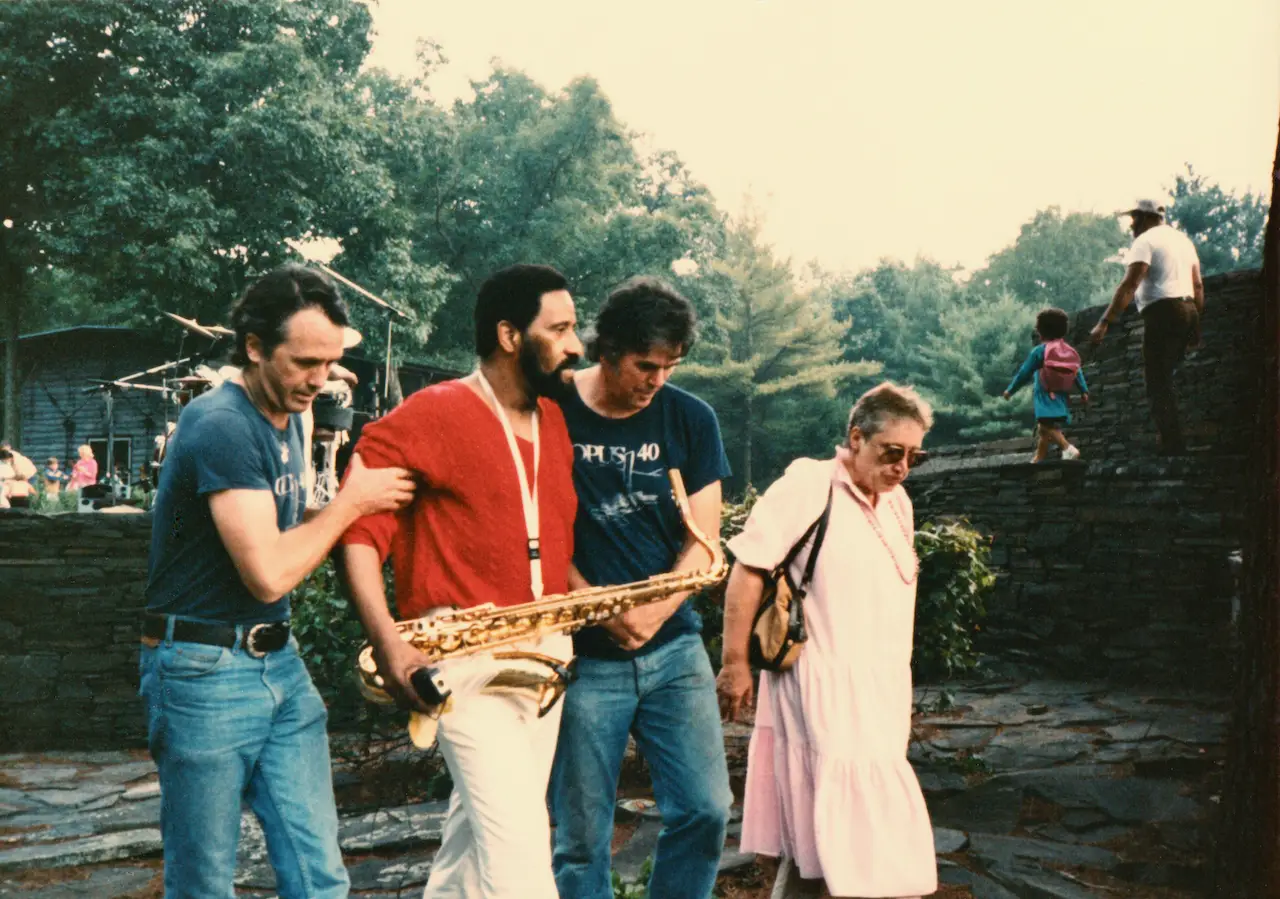
It was equal parts the lingering Depression economy and the wholesale enlistment of musicians during WWII that ended the Big Band era of jazz. What emerged in its wake were radically downsized swing ensembles that took one of two roads at this fork in the developmental history of jazz. The first was the crowd-pleasing, danceable sounds of artists like Louis Jordan and Illinois Jacquet, something that would lead to the emergence of R&B and rock-n-roll. The second was a more challenging idiom typified by frenetic tempos and advanced harmonic structures. It was a genre pioneered by Dizzy Gillespie, Charlie Parker, Thelonious Monk and a handful of others at late night jam sessions at Minton’s Playhouse in Harlem – the fiercely virtuosic and intellectually-rich genre called bebop.
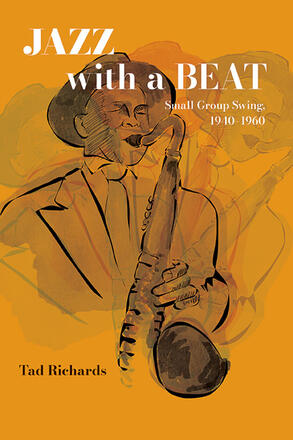
In his new book, Jazz with A Beat (SUNY Press), Tad Richards provides an exhaustively-researched but eminently readable look at this under-explored and under-appreciated flavor of small group/post-Big Band swing, and the new styles it would birth.
Still cooking on several burners at 84 years of age, Richards is a true Hudson Valley original. He is author of more than three dozen books, a much-published poet and journalist, visual artist and sometimes songwriting partner of local legends like John Hall of the band Orleans. Tad was even the screenwriter of two soft-core sex comedies of the ‘70s that are now considered cult classics, The Happy Hooker Goes to Washington and The Cheerleaders!
But Richards may be best known for his long-running role as Artistic Director and President of Opus 40, the famed sculpture park/renowned earth artwork singlehandedly built by his stepfather, Harvey Fite. Tad came to Opus 40 in 1944 when his mother married Fite. After Fite and his mother passed, Tad and his wife ran the park, from 1987 through their retirement in 2018. For three decades, Richards also worked to present some of the most memorable concerts in the Hudson Valley at Opus 40. They included the dramatic performance by jazz great Sonny Rollins captured in the documentary, Saxophone Colossus. You can read my feature on this legendary event here.
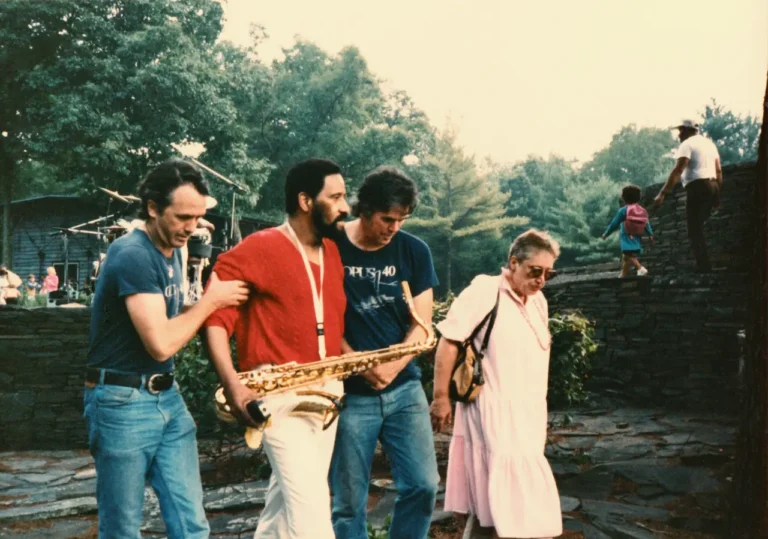
With the move to small groups, jazz soloists came to the fore. Most notable was tenor saxophonist Illinois Jacquet, a Texas virtuoso who set the template for “honking” soloing on “Flying Home,” first with Lionel Hamptons’ band and later with his own ensemble. Unlike in large bands, in these compact quintets and sextets, there was no music being read on stage; the magic was made when soloists like Jacquet cut loose and fired up the audience. There’s also a lengthy look at the career of Louis Jordan, a man widely regarded, and noted in his Rock and Roll Hall of Fame induction, as the “Father of Rhythm & Blues.” Jordon and his Tympani Five were huge stars in the 1940s and 1950s, thanks to a string of hits including “Choo Choo Ch’Boogie,” “Is You Is or Is You Ain’t My Baby” and “Saturday Night Fish Fry.” The latter was one of the first tunes to feature the word “rocking” in its chorus, and a distorted electric guitar as well. Jordon’s “jump blues” style and captivating stage demeanor would be a huge influence on rock-n-roll’s first superstar, Chuck Berry.
Richards’ investigation largely focuses on the influence small band swing had on the development of R&B and proto rock-n-roll in the fertile music scene around Central Avenue in Los Angeles. A host of small independent record labels fueled this evolution. Jump blues tunes like Joe Liggins’ “The Honeydripper” (1945) and Wynonie Harris’s “Good Rockin’ Tonight” (1947) are often credited as the first true rock-n-roll songs. Schooled musicians like Big Jay McNeely, who could’ve pursued more challenging bebop, went for more mainstream R&B styles. His over-the-top soloing and stage antics are best captured on “The Deacon’s Hop,” maybe the most sax-honking-ist song of all-time and a #1 R&B hit (1949). According to the book, McNeely was playing a raucous gig in Berlin on November 9, 1989, the night the famous wall came down. Coincidence?
Richards’ journey continues to connect the dots to other music scenes across America. He addresses everything from Dave Bartholomew’s early works with Fats Domino and Little Richard in New Orleans to the Xerox copy works of white artists like Bill Haley’s and his “Rock Around the Clock.” White artists like Haley and Elvis would strike gold mining the styles, sounds and even many songs composed and first recorded by early R&B and jump blues practitioners.
“Jazz with a Beat” is a deeply informative yet easily digestible trip back to the days when jazz explored new beats and ferocity, ones that were perhaps the truest and deepest roots of modern day R&B and rock.
The post Innovations of Jazz’s Small Swing Groups of the 1940s-1960s Explored in New Book “Jazz with a Beat” appeared first on NYS Music.

